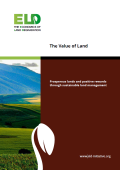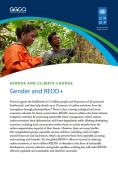
Forests support the livelihoods of 1.6 billion people and 80 percent of all terrestrial biodiversity, and they help absorb up to 30 percent of carbon emissions from the atmosphere through photosynthesis. There is thus a strong ecological and socioeconomic rationale for forest conservation. REDD+ aims to address the forest-climate mitigation interface by promoting sustainable forest management, which reduces carbon emissions from deforestation and forest degradation while allowing developing countries, including local communities within them, to receive benefits from the carbon sequestration capacity of their forests. However, there are many hurdles that marginalized groups, especially women, still face, including a lack of rights around forest use and land tenure, which can prevent them from equitably accessing and receiving such benefits. For the global REDD+ effort to succeed in reducing carbon emissions, it has to deliver REDD+ co-benefits in the form of sustainable development, poverty reduction and gender equality—nothing less will make REDD+ effective, equitable and sustainable, and therefore successful.
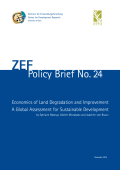
Our findings, based on satellite imagery data, show that land degradation hotspots cover about 30% of the global land area, where about 3.2 billion people reside.
Grassland areas experienced the most severe degradation. A third of the global grasslands and a quarter of croplands and about 29% of forest mosaics with shrubs and grasslands. Unlike many past studies, the present study shows that land degradation is a global problem occurring in both developed and developing countries as well as in tropical and temperate regions. Ground-truthing data in our six case-study countries showed a high degree of congruity between satellite imagery data and community perceptions of land degradation, and an intermediate congruity on areas that experienced land improvement – suggesting our land degradation results are robust.
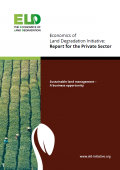
With around one-third of the world’s arable land degraded, estimated annual losses of 6.3 to 10.6 USD trillion, and a projected need to increase food production from land by 70 percent by 2050, we simply cannot afford to neglect the loss of potential production from careless land management. Whenever land is not producing at its potential, it is an underperforming asset that requires investments to ensure the future supply chains that many industries depend upon.
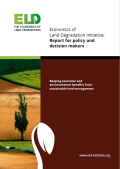
This report provides evidence of how increasingly scarce resources can be conserved and also presents tools for policy-/decision-makers to promote and secure future wealth and human well-being through sustainable land management. It emphasises taking long-term benefits into account and focuses on practical solutions, as well as the context in which sustainable land management occurs. The report aims to ensure the returns of sustainable land management (e.g., economic growth, food security, sustainable livelihoods and reduced conflict over natural resources) are realised through the use of robust economic valuation methodologies. The report also highlights that sustainable land management provides additional benefits at the national level through obligations under other multilateral environmental agreements, such as the UN Convention to Combat Desertification (UNCCD), e.g., through achieving land degradation neutrality, the UNFCCC, and the Convention on Biological Diversity (CBD).
